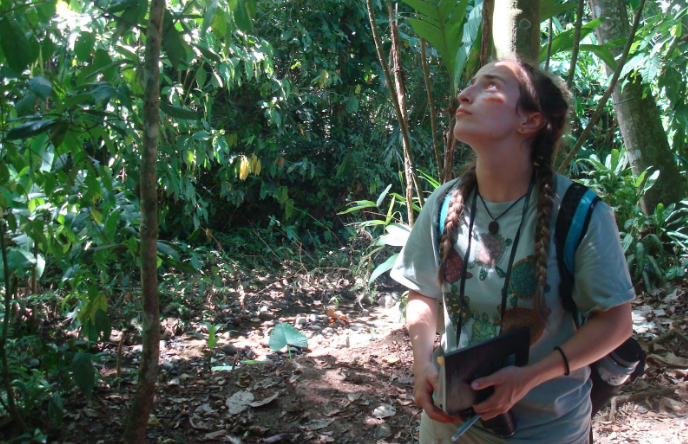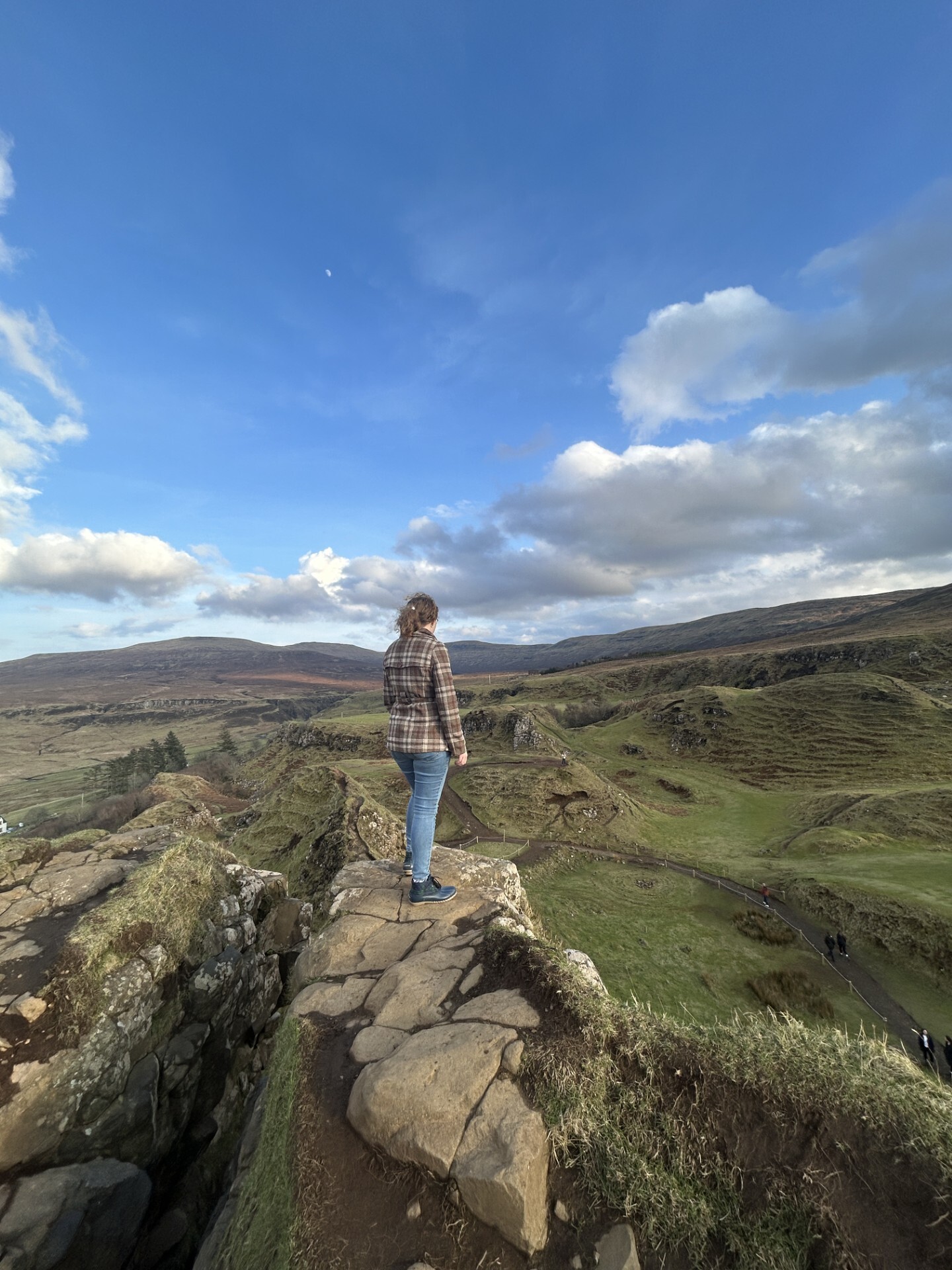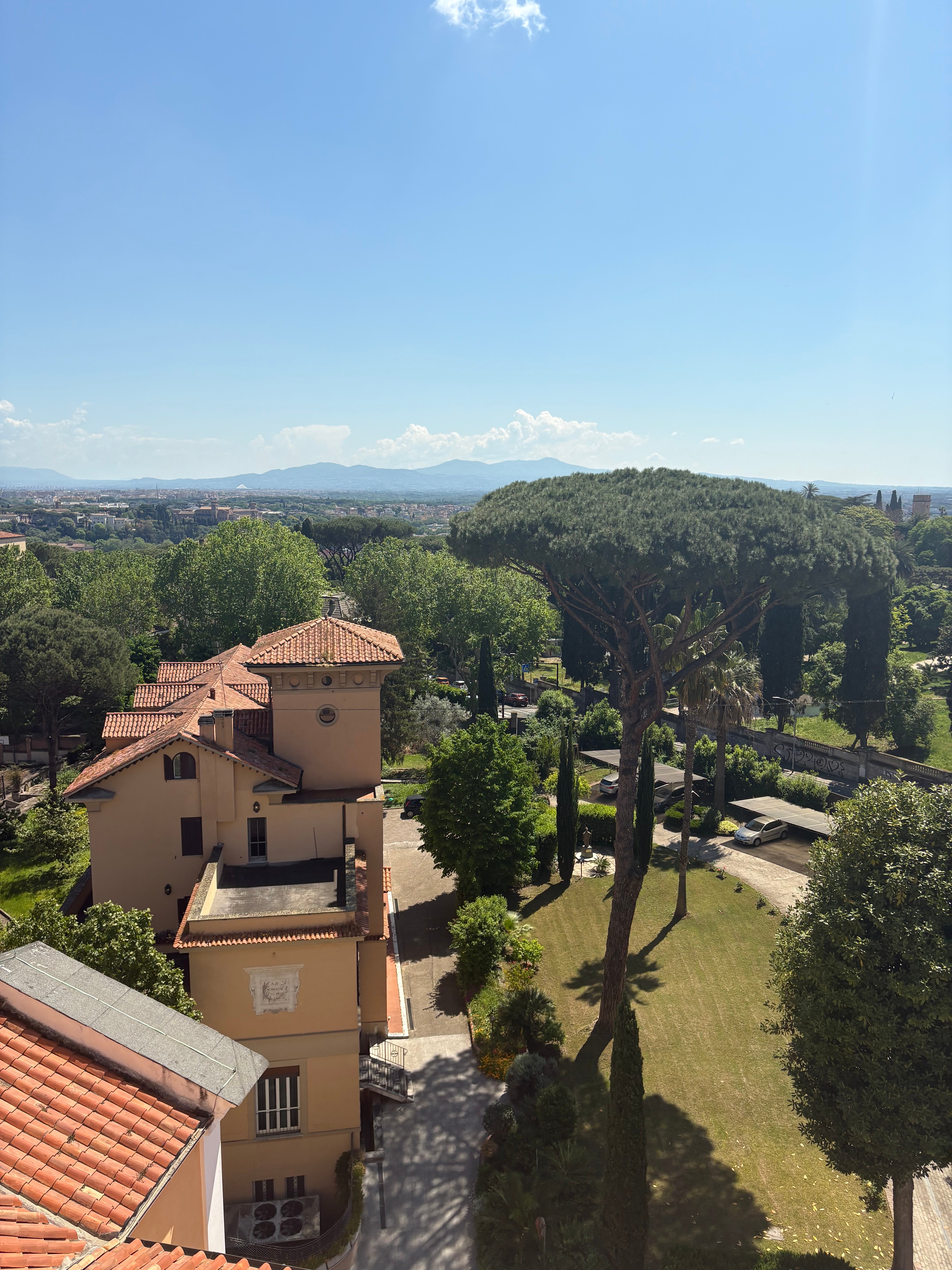My name is Katerina Neri, and I’m a junior at the University of Maine, studying wildlife ecology with a concentration in wildlife science and management. My studies mainly focus on the living things all around us, and the interactions going on between those things. I grew up hiking, camping, traveling, and appreciating nature. I spent a semester in Costa Rica because of Costa Rica's incredible biodiversity and unique species.
 While preparing for my time abroad, one of my biggest concerns was the classes. I had taken plenty of environmental science classes at my home university, but the class descriptions for my abroad program sounded like they’d be some of the hardest I’d ever taken. The syllabi were even more daunting. I wanted to explore a new place, but everything I read made it sound like I’d be locked in a classroom or library the whole time. I also wondered how I’d study ecology while living in the middle of Costa Rica’s largest city, San José. Luckily, my concerns turned out to be unnecessary.
While preparing for my time abroad, one of my biggest concerns was the classes. I had taken plenty of environmental science classes at my home university, but the class descriptions for my abroad program sounded like they’d be some of the hardest I’d ever taken. The syllabi were even more daunting. I wanted to explore a new place, but everything I read made it sound like I’d be locked in a classroom or library the whole time. I also wondered how I’d study ecology while living in the middle of Costa Rica’s largest city, San José. Luckily, my concerns turned out to be unnecessary.
Class Setup
 Classes at my host university were different from those at home—in the best way possible. At my home university, I have daily classes that start early, often with long lectures and endless hours of studying for tough exams. At my host university, the rhythm was much more relaxed and enjoyable. Classes were only Monday through Thursday, meaning three-day weekends to explore. They ran between 1 p.m. and 8 p.m., and though each class lasted two hours, lecture time rarely exceeded an hour. The rest of the time was usually filled with hands-on class activities.
Classes at my host university were different from those at home—in the best way possible. At my home university, I have daily classes that start early, often with long lectures and endless hours of studying for tough exams. At my host university, the rhythm was much more relaxed and enjoyable. Classes were only Monday through Thursday, meaning three-day weekends to explore. They ran between 1 p.m. and 8 p.m., and though each class lasted two hours, lecture time rarely exceeded an hour. The rest of the time was usually filled with hands-on class activities.
The small class sizes made it easy to get to know both classmates and professors. Best of all, there were no quizzes or exams—just projects. And the highlight? Every class included a field trip, at no extra cost!
Field Trips
 Each class trip was unique. Some included research projects, while others were simply about enjoying nature. Weekend trips usually lasted two or three days, and short day trips took just a few hours. I was initially disappointed about being based in a big city, but these trips gave me the chance to get out and experience the Costa Rican environments I was hoping for.
Each class trip was unique. Some included research projects, while others were simply about enjoying nature. Weekend trips usually lasted two or three days, and short day trips took just a few hours. I was initially disappointed about being based in a big city, but these trips gave me the chance to get out and experience the Costa Rican environments I was hoping for.
Picking a favorite trip is almost impossible. For Marine Mammals of Costa Rica, we went whale watching and saw spotted dolphins swimming around our boat. Tropical Ecology took us to Cahuita National Park, the Uatsi Indigenous Reservation, and Quetzales National Park. We had to collect data on wildlife—sloths, monkeys, agoutis, vipers, poison dart frogs, and more. We also had plenty of free time to swim at the beach across from our hotel and hang out with friends.
 In Conservation Biology of Endangered Marine Species, we watched the sunset at Marino Ballena National Park and went snorkeling at Isla del Caño, where we saw sea turtles, sharks, a manta ray, and a variety of fish. For Tropical Birds, we visited the Lapa Verde Sanctuary and La Selva Biological Research Station. That trip included avoiding fer-de-lance snakes and bullet ants, but we were rewarded with sightings of kinkajous, otters, peccaries, and over 100 bird species—including the great green macaw.
In Conservation Biology of Endangered Marine Species, we watched the sunset at Marino Ballena National Park and went snorkeling at Isla del Caño, where we saw sea turtles, sharks, a manta ray, and a variety of fish. For Tropical Birds, we visited the Lapa Verde Sanctuary and La Selva Biological Research Station. That trip included avoiding fer-de-lance snakes and bullet ants, but we were rewarded with sightings of kinkajous, otters, peccaries, and over 100 bird species—including the great green macaw.
Tips for Future Travelers
 If you’re outdoorsy and love nature, Costa Rica is perfect for you. Take full advantage of the field trips and, if possible, extend your stay in some of those areas. A little research before your trips goes a long way—bring a rain jacket or bug spray if needed, and always keep an eye on where you’re stepping. Carry a small first-aid kit just in case.
If you’re outdoorsy and love nature, Costa Rica is perfect for you. Take full advantage of the field trips and, if possible, extend your stay in some of those areas. A little research before your trips goes a long way—bring a rain jacket or bug spray if needed, and always keep an eye on where you’re stepping. Carry a small first-aid kit just in case.
As for classes—just have fun and do your best. The classroom part might seem boring compared to the field trips, but the background knowledge you gain is super valuable and helps you appreciate the experiences even more. Going abroad is a great way to learn, grow, and explore. Costa Rica helped me do all three—and I had a blast along the way.
Learn more about CIS Abroad programs in Costa Rica here!





 While preparing for my time abroad, one of my biggest concerns was the classes. I had taken plenty of environmental science classes at my home university, but the class descriptions for my abroad program sounded like they’d be some of the hardest I’d ever taken. The syllabi were even more daunting. I wanted to explore a new place, but everything I read made it sound like I’d be locked in a classroom or library the whole time. I also wondered how I’d study ecology while living in the middle of Costa Rica’s largest city, San José. Luckily, my concerns turned out to be unnecessary.
While preparing for my time abroad, one of my biggest concerns was the classes. I had taken plenty of environmental science classes at my home university, but the class descriptions for my abroad program sounded like they’d be some of the hardest I’d ever taken. The syllabi were even more daunting. I wanted to explore a new place, but everything I read made it sound like I’d be locked in a classroom or library the whole time. I also wondered how I’d study ecology while living in the middle of Costa Rica’s largest city, San José. Luckily, my concerns turned out to be unnecessary. Classes at my host university were different from those at home—in the best way possible. At my home university, I have daily classes that start early, often with long lectures and endless hours of studying for tough exams. At my host university, the rhythm was much more relaxed and enjoyable. Classes were only Monday through Thursday, meaning three-day weekends to explore. They ran between 1 p.m. and 8 p.m., and though each class lasted two hours, lecture time rarely exceeded an hour. The rest of the time was usually filled with hands-on class activities.
Classes at my host university were different from those at home—in the best way possible. At my home university, I have daily classes that start early, often with long lectures and endless hours of studying for tough exams. At my host university, the rhythm was much more relaxed and enjoyable. Classes were only Monday through Thursday, meaning three-day weekends to explore. They ran between 1 p.m. and 8 p.m., and though each class lasted two hours, lecture time rarely exceeded an hour. The rest of the time was usually filled with hands-on class activities. Each class trip was unique. Some included research projects, while others were simply about enjoying nature. Weekend trips usually lasted two or three days, and short day trips took just a few hours. I was initially disappointed about being based in a big city, but these trips gave me the chance to get out and experience the Costa Rican environments I was hoping for.
Each class trip was unique. Some included research projects, while others were simply about enjoying nature. Weekend trips usually lasted two or three days, and short day trips took just a few hours. I was initially disappointed about being based in a big city, but these trips gave me the chance to get out and experience the Costa Rican environments I was hoping for. In Conservation Biology of Endangered Marine Species, we watched the sunset at Marino Ballena National Park and went snorkeling at Isla del Caño, where we saw sea turtles, sharks, a manta ray, and a variety of fish. For Tropical Birds, we visited the Lapa Verde Sanctuary and La Selva Biological Research Station. That trip included avoiding fer-de-lance snakes and bullet ants, but we were rewarded with sightings of kinkajous, otters, peccaries, and over 100 bird species—including the great green macaw.
In Conservation Biology of Endangered Marine Species, we watched the sunset at Marino Ballena National Park and went snorkeling at Isla del Caño, where we saw sea turtles, sharks, a manta ray, and a variety of fish. For Tropical Birds, we visited the Lapa Verde Sanctuary and La Selva Biological Research Station. That trip included avoiding fer-de-lance snakes and bullet ants, but we were rewarded with sightings of kinkajous, otters, peccaries, and over 100 bird species—including the great green macaw. If you’re outdoorsy and love nature, Costa Rica is perfect for you. Take full advantage of the field trips and, if possible, extend your stay in some of those areas. A little research before your trips goes a long way—bring a rain jacket or bug spray if needed, and always keep an eye on where you’re stepping. Carry a small first-aid kit just in case.
If you’re outdoorsy and love nature, Costa Rica is perfect for you. Take full advantage of the field trips and, if possible, extend your stay in some of those areas. A little research before your trips goes a long way—bring a rain jacket or bug spray if needed, and always keep an eye on where you’re stepping. Carry a small first-aid kit just in case.